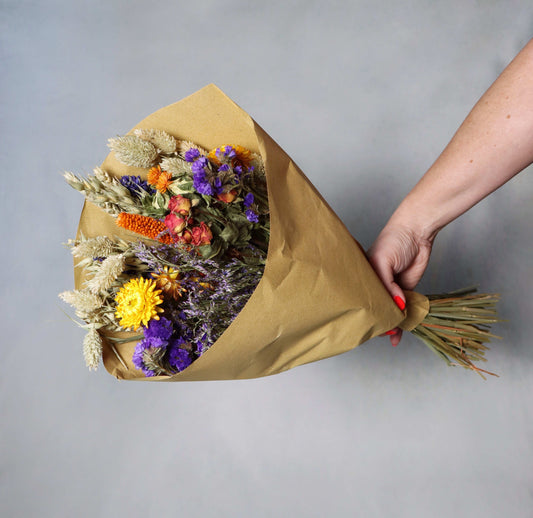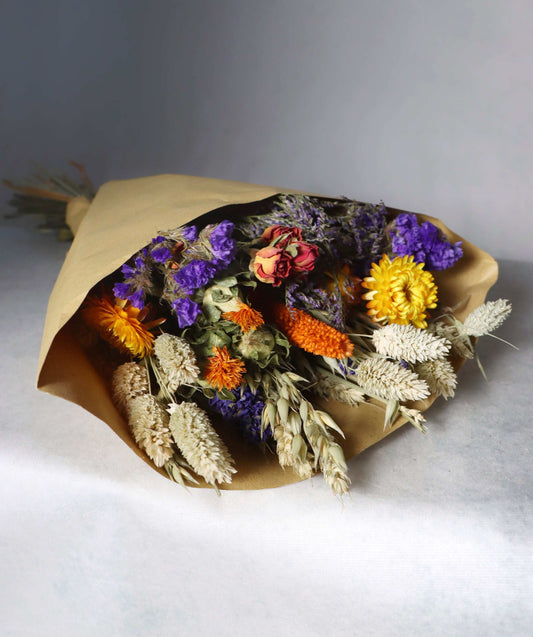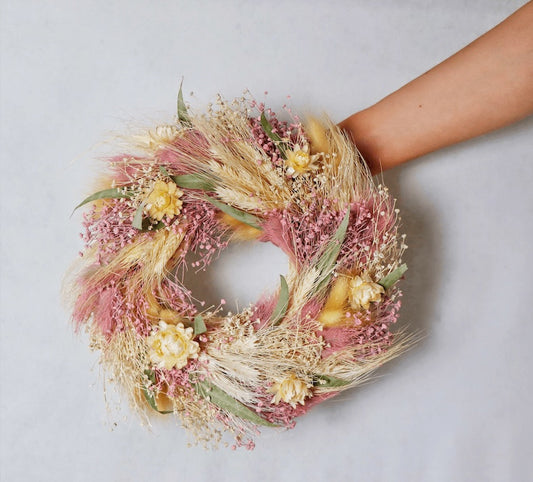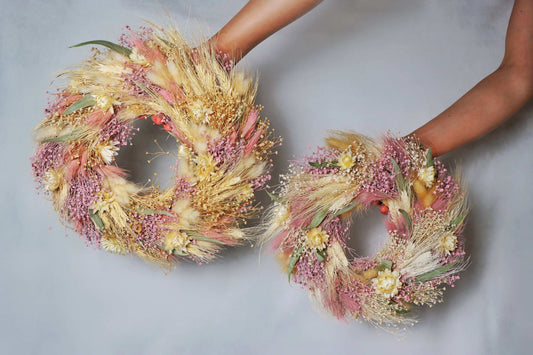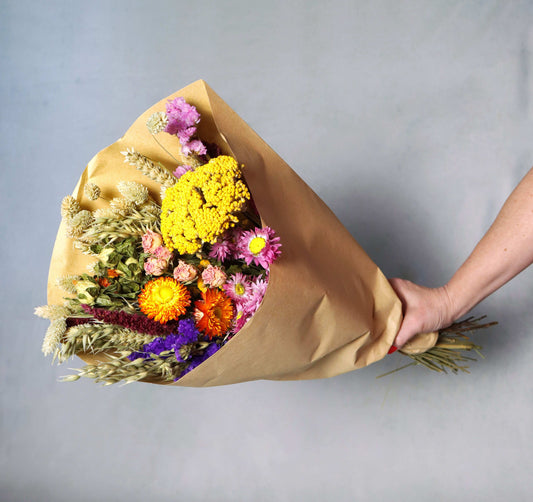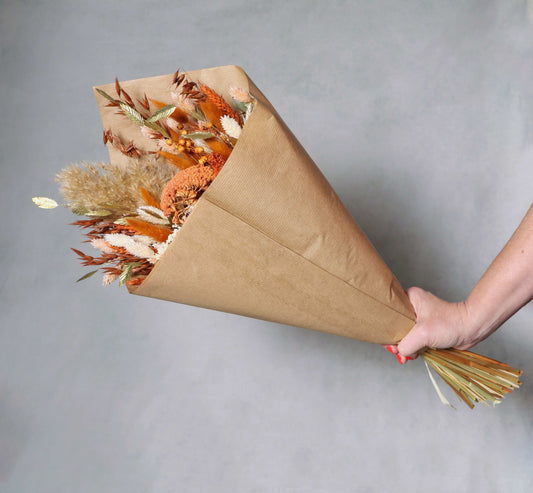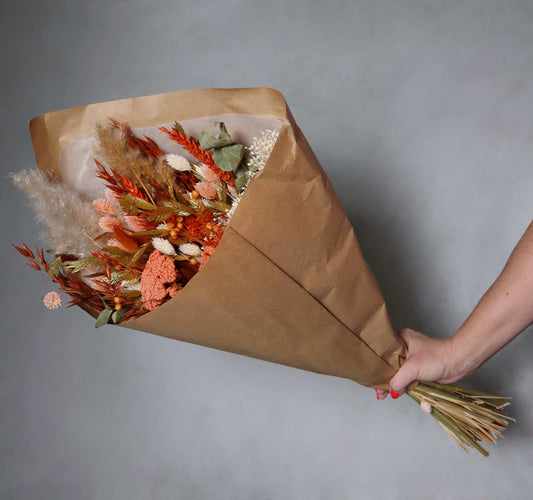
How to Press and Dry Flowers: An Expert Guide
Written by Daniel LoeblThere’s something undeniably nostalgic about pressed flowers. Whether preserving wedding blooms, a garden favourite, or simply embracing slow living, pressing flowers is a beautiful way to create lasting keepsakes.
With techniques dating back centuries, flower pressing is easier than you might think. This guide’ll show you how to press and dry flowers at home, using simple materials, expert tips, and plenty of creative ideas.
Step 1: Picking the Perfect Flowers
Choose flowers with thin petals and relatively flat heads, as these press best and retain colour. Some of the best options include:
-
Pansies
-
Violets
-
Daisies
-
Cornflowers
-
Hydrangea heads (small)
Try to pick flowers on a dry day and press them as soon as possible to preserve freshness. If using flowers from a bouquet, trim the stems and blot away moisture first.
Step 2: The Classic Book Method
This tried-and-true method is ideal for beginners and requires minimal equipment:
-
Place the flower between two sheets of parchment or blotting paper.
-
Sandwich it in the centre of a heavy book (like an encyclopedia).
-
Stack additional books or a weight on top.
-
Leave undisturbed for 2–3 weeks.
Tip: Use different layers to press multiple flowers at once. If moisture is present, change the paper every few days.
Step 3: Using a Flower Press
If you’re pressing regularly, investing in a flower press can speed up the process and produce more uniform results.
Most flower presses use two wooden boards tightened with wing nuts and layers of cardboard and blotting paper. Follow these steps:
-
Insert the flower between layers.
-
Tighten the screws to apply pressure.
-
Leave for 1–2 weeks.
You can buy ready-made presses from online craft shops or even make your own.
Step 4: Quick Microwave or Iron Pressing
Short on time? Try these fast-track methods:
Microwave:
-
Place the flower between two sheets of paper.
-
Sandwich inside a microwave-safe ceramic tile or press.
-
Heat in 10-second bursts, checking each time.
Iron:
-
Arrange flowers between the paper.
-
Press with a warm, dry iron (no steam) for 10–15 seconds.
Always use a barrier to protect delicate petals.
Step 5: Finishing Touches
Once fully dried and pressed:
-
Carefully peel flowers from the paper.
-
Mount on acid-free card using glue or archival tape.
-
Frame under glass to preserve their beauty.
You can also store pressed flowers in scrapbooks or journals.
Creative Ideas for Pressed Flowers
Pressed flowers are wonderfully versatile. Here are some creative projects to try:
-
Handmade greeting cards
-
Personalised bookmarks
-
Resin jewellery
-
Decorative phone cases
-
Framed wall art
They also make thoughtful gifts and memory pieces for weddings, anniversaries and other special occasions.
How to Avoid Common Pressing Problems
-
Brown spots or mould are usually caused by excess moisture. Make sure flowers are dry and use absorbent paper.
-
Some colour fading is natural; avoid direct sunlight and choose vibrant blooms to start.
-
Handle pressed flowers with tweezers and care to avoid petal breakage.
Final Thoughts
Pressing and drying flowers is a timeless way to preserve a little bit of nature. Whether you’re looking to create beautiful keepsakes, get crafty with seasonal blooms, or decorate with floral art, flower pressing is simple, satisfying, and sustainable.
At Dried, we’re passionate about helping you embrace floral creativity. Visit our blog for more dried flower inspiration, or explore our seasonal collection of naturally preserved blooms. Follow us on Instagram and Pinterest for behind-the-scenes beauty.
PREVIOUS:
How to Make Your Own D...
